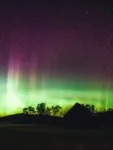Sharad Purnima, also known as Ashwina Purnima, is an auspicious day for Hindus. It holds religious and spiritual significance and is considered the most sacred day. This year, Sharad Purnima will be celebrated on October 28, 2023. People offer prayers to the moon on this day and worship Lord Krishna and Goddess Radha. Devotees also observe fasts and perform rituals such as the Satyanarayan Vrat. Placing rice kheer under the moonlight is a popular practice, but it is not recommended during a lunar eclipse.
Sharad Purnima 2023
Sharad Purnima 2023: Date and Time
Sharad Purnima is observed during the Ashwina month, and it is also known as Ashwina Purnima. In 2023, Sharad Purnima falls on October 28. The Purnima Tithi begins on October 28, 2023, at 04:17 AM and ends on October 29, 2023, at 01:53 AM. The Moonrise on Sharad Purnima Day is expected at 04:53 PM.
Significance of Sharad Purnima
Sharad Purnima holds immense religious significance in Hindu culture. It is considered the most sacred and pious day. People offer prayers to the Moon on this day, and it is also known as Kojagari Purnima. This day marks the beginning of the Sharad Ritu or winter season. However, in 2023, a lunar eclipse (Chandra Grahan) will also take place on Sharad Purnima, making it inauspicious for those influenced by the Moon planet.
Celebrating Sharad Purnima
According to Hindu mythology, Sharad Purnima is a special day because the Moon rises with its 16 kalas or phases. Lord Krishna, who possessed these 16 qualities, is also worshipped on this day. Many devotees of Lord Vishnu observe fasts and perform the Satyanarayan Vrat. However, due to the lunar eclipse this year, the Satyanarayan fast will be observed on Chaturthi Tithi.
Farmers celebrate Sharad Purnima by worshipping Goddess Laxmi for a bountiful harvest. It is believed that those who worship Goddess Laxmi with devotion are blessed with happiness, health, wealth, good fortune, financial gains, and prosperity. In some regions, it is believed that Goddess Laxmi was born on this day, so people celebrate her birth anniversary by offering sattvik food, homemade sweets, and decorating their homes with rangoli and lighting diyas.
The Moon on Sharad Purnima is said to be as bright as the Sun and illuminates the world with its sacred and divine light. The Moon’s rays are considered nectar and contain nourishing qualities, providing healing and calmness. According to Hindu scriptures, Sharad Purnima is the auspicious day and night when Lord Krishna performed the Raas dance with Radha and other Gopis near the bank of the Yamuna river. Therefore, this day is dedicated to the worship of Lord Krishna and Radha. Devotees take a holy dip in the Yamuna River in Mathura to seek the blessings of Lord Krishna and Goddess Radha, believing that their wishes will be fulfilled.
Ritual of Placing ‘Kheer’ under the Moonlight
One of the most famous practices on Sharad Purnima is placing rice kheer under the moonlight. It is believed that keeping kheer under the moonlight throughout the night allows it to absorb the healing properties and divine nectar. This can alleviate long-term diseases, skin issues, cold, cough, and asthma, while also providing mental and physical strength.
However, it is crucial to note that during a lunar eclipse, it is not auspicious to place kheer under the moonlight. The Moon’s influence on our emotions and feelings is well-known, and when it comes under the influence of celestial bodies like Rahu, Ketu, or Shani, it can lead to emotional imbalances. Therefore, it is advisable to place the kheer before the lunar eclipse begins or after it ends to avoid collecting negative energies.
Choice of Vessel for ‘Kheer’
For placing the kheer under the moonlight, it is recommended to use a silver vessel. Silver is known for its high resistivity and is believed to keep away viruses.
Rituals for Sharad Purnima
- Begin your day by taking a holy bath early in the morning.
- Offer prayers to Lord Vishnu and Goddess Laxmi during the daytime.
- Worship Lord Krishna and Goddess Radha.
- Light a diya and offer sweets and panchamrit to the deities.
- Recite Vishnu Sahasranama, Shri Hari Stotram, and Chandra Mantras.
- In the evening, light diyas and candles outside your house.
- Prepare kheer and offer it to the Moon and the deities.
Mantras for Sharad Purnima
- “Om Chandraye Namah.”
- “Om Sam Sreem Shrom Saha Chandramase Namah.”
- “Shri Krishna Govind Hare Murari Hey Nath Narayan Vasudeva.”
Scientific Explanation of Sharad Purnima Rituals
While Sharad Purnima is primarily a religious and cultural celebration, some of its rituals also have scientific explanations or can be understood through scientific concepts:
- Moon’s Influence on Tides and Living Beings: The tradition of offering prayers to the Moon on Sharad Purnima has a scientific basis in the Moon’s gravitational influence on Earth. The Moon’s gravitational pull causes ocean tides. It is believed that this gravitational force may have subtle effects on living organisms, as our bodies are composed of a significant amount of water. Some people associate the act of praying to the Moon with seeking harmony and balance.
- The Moon’s Phases: Sharad Purnima is celebrated on a full moon night when the Moon is at its brightest and fullest. The lunar phases, including the full moon, have been associated with various natural rhythms and human behavior. While there is no scientific evidence to support specific claims about the Moon’s influence on human behavior, the tradition of celebrating full moon nights has a historical basis.
- Ritual of Placing ‘Kheer’ under Moonlight: Placing kheer under the moonlight is believed to have a scientific connection with the concept of moonlight’s cooling effect. Moonlight is cooler than direct sunlight, and in some regions, the act of placing a food offering like kheer under the moonlight may have been a practical way to cool the food, especially in the pre-refrigeration era. Additionally, the act of consuming this chilled food might have provided comfort, especially in warm climates.
- Lunar Eclipse and Ritual Timing: The caution against placing kheer under the moonlight during a lunar eclipse is rooted in the understanding of celestial events. During a lunar eclipse, the Earth comes between the Sun and the Moon, casting a shadow on the Moon. This alignment is not an auspicious time for rituals because the eclipse is associated with changing celestial energies. In a scientific context, this practice aligns with the concept of avoiding actions that might be disrupted by a celestial event.
- Benefits of Silver Vessel: The recommendation to use a silver vessel for placing kheer under the moonlight has a scientific basis in the properties of silver. Silver is known for its high thermal conductivity, which means it can absorb or release heat more effectively than many other metals. This quality could be relevant when keeping food cool or preserving its temperature. Additionally, silver has antimicrobial properties, which may have contributed to the belief that it keeps food safe and pure.
It’s important to note that while there are scientific explanations or practical reasons behind some aspects of Sharad Purnima rituals, the primary significance of this celebration remains cultural and religious. These rituals are deeply rooted in tradition and are observed for their spiritual and symbolic meanings rather than purely scientific reasons.
Stay Updated | Sharad Purnima 2023
- Follow us on Facebook , Telegram and Twitter for the latest Education News updates and Daily Current Affairs
- Subscribe to our website for more updates on upcoming exams and results.
- Check all open Government Jobs 2023 Here
In conclusion, Sharad Purnima is a day of great significance for Hindus, marked by various rituals and celebrations. While it is a time to seek blessings and enjoy the sacred moonlight, it is important to be mindful of the lunar eclipse and the specific rituals associated with it. The placement of kheer under the moonlight is a unique and age-old tradition, believed to hold numerous benefits, but it must be observed with care, especially during celestial events like lunar eclipses.
























